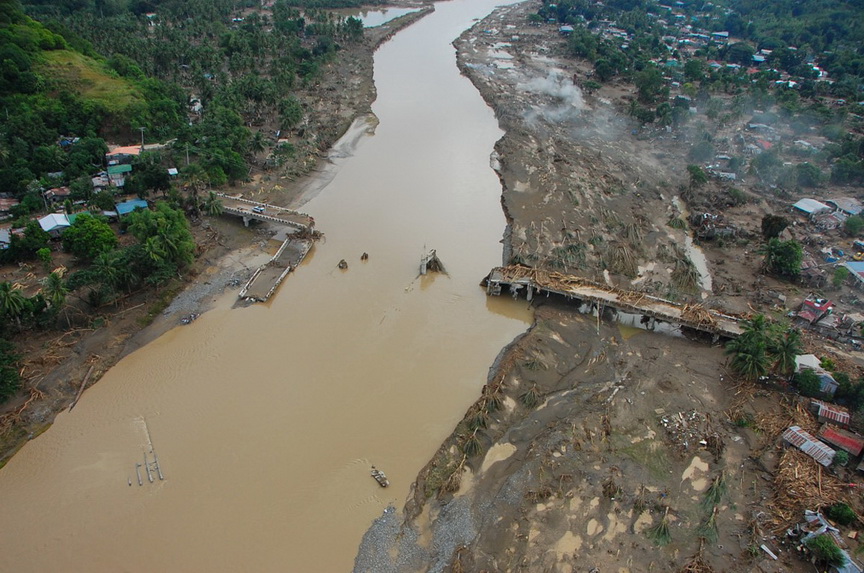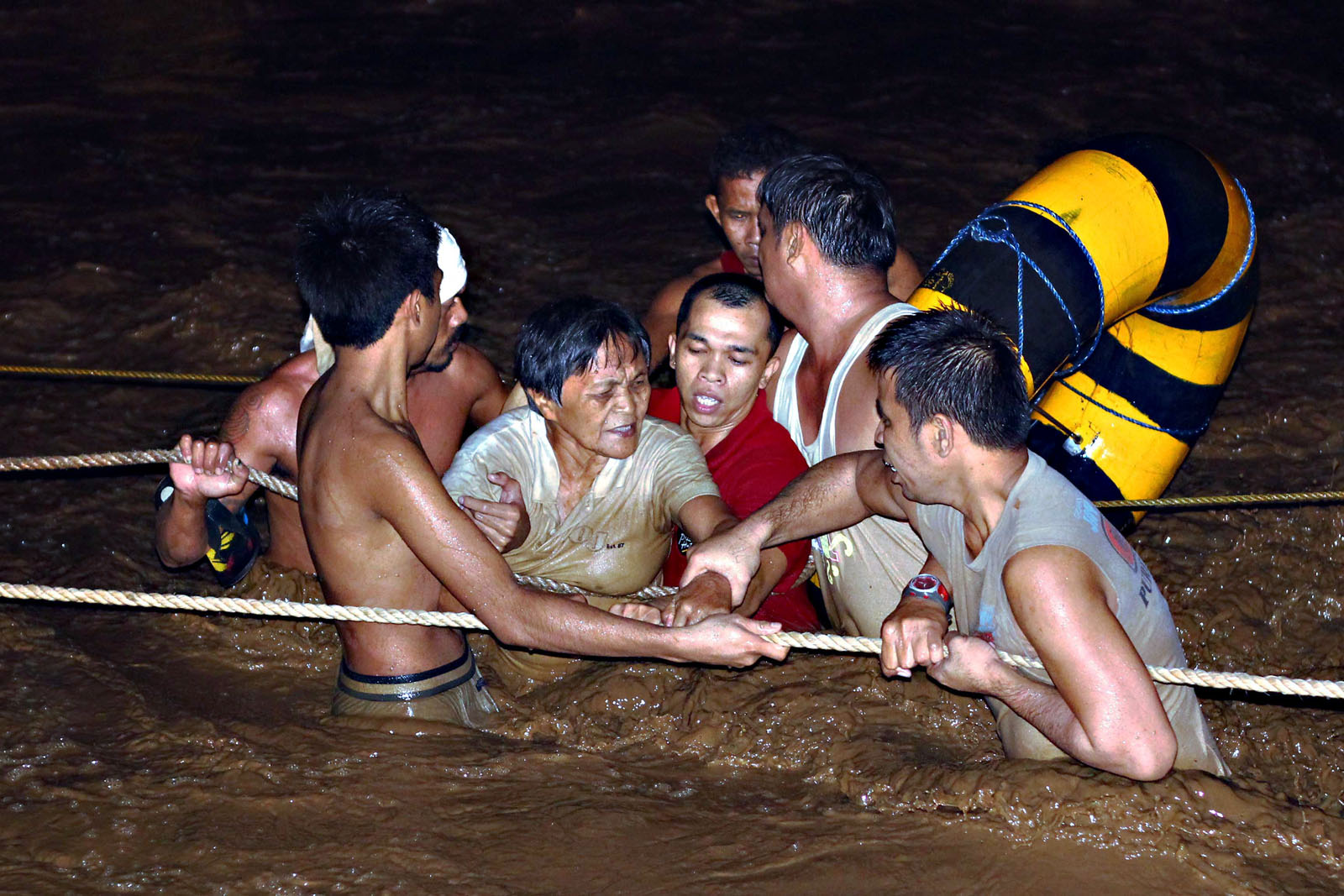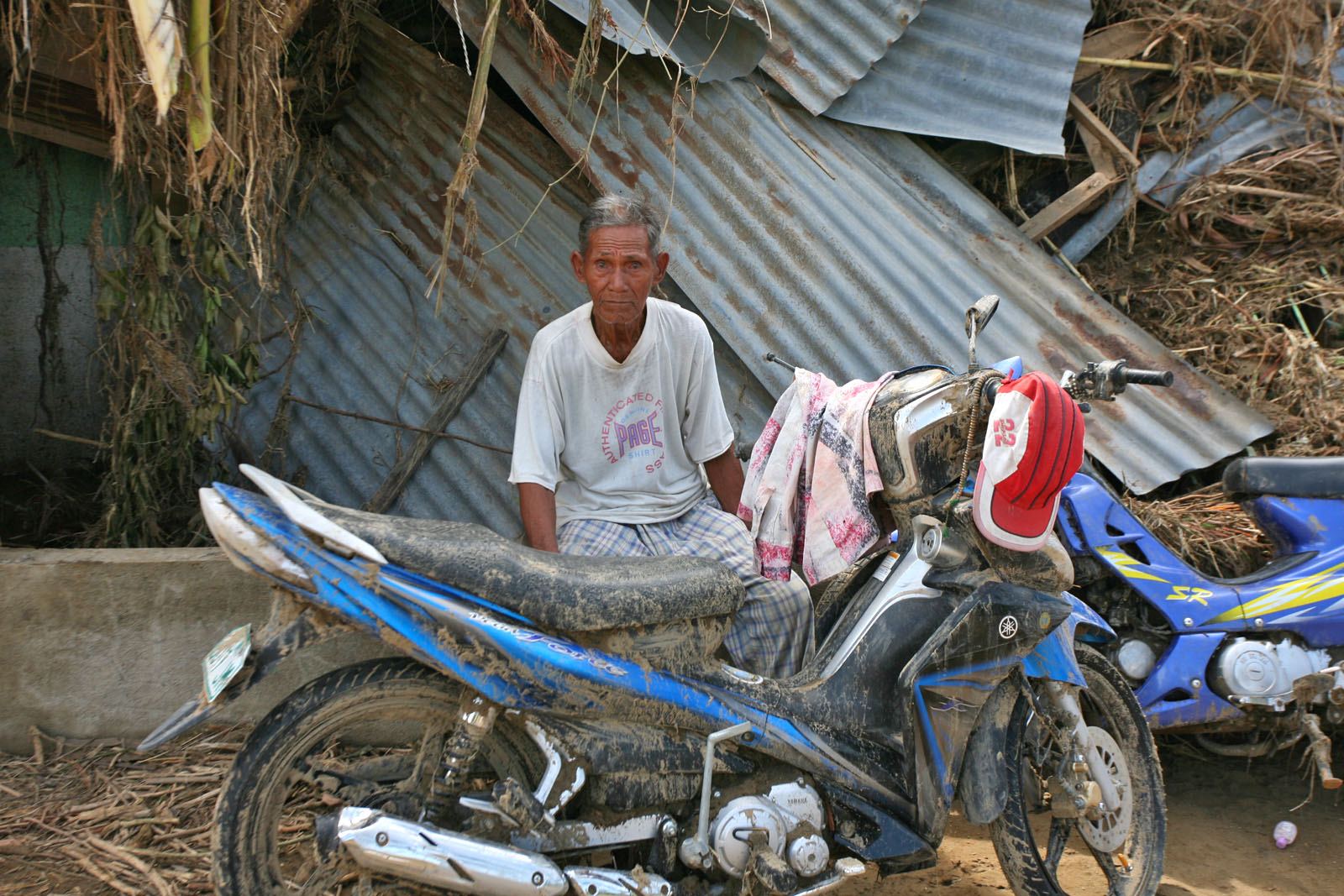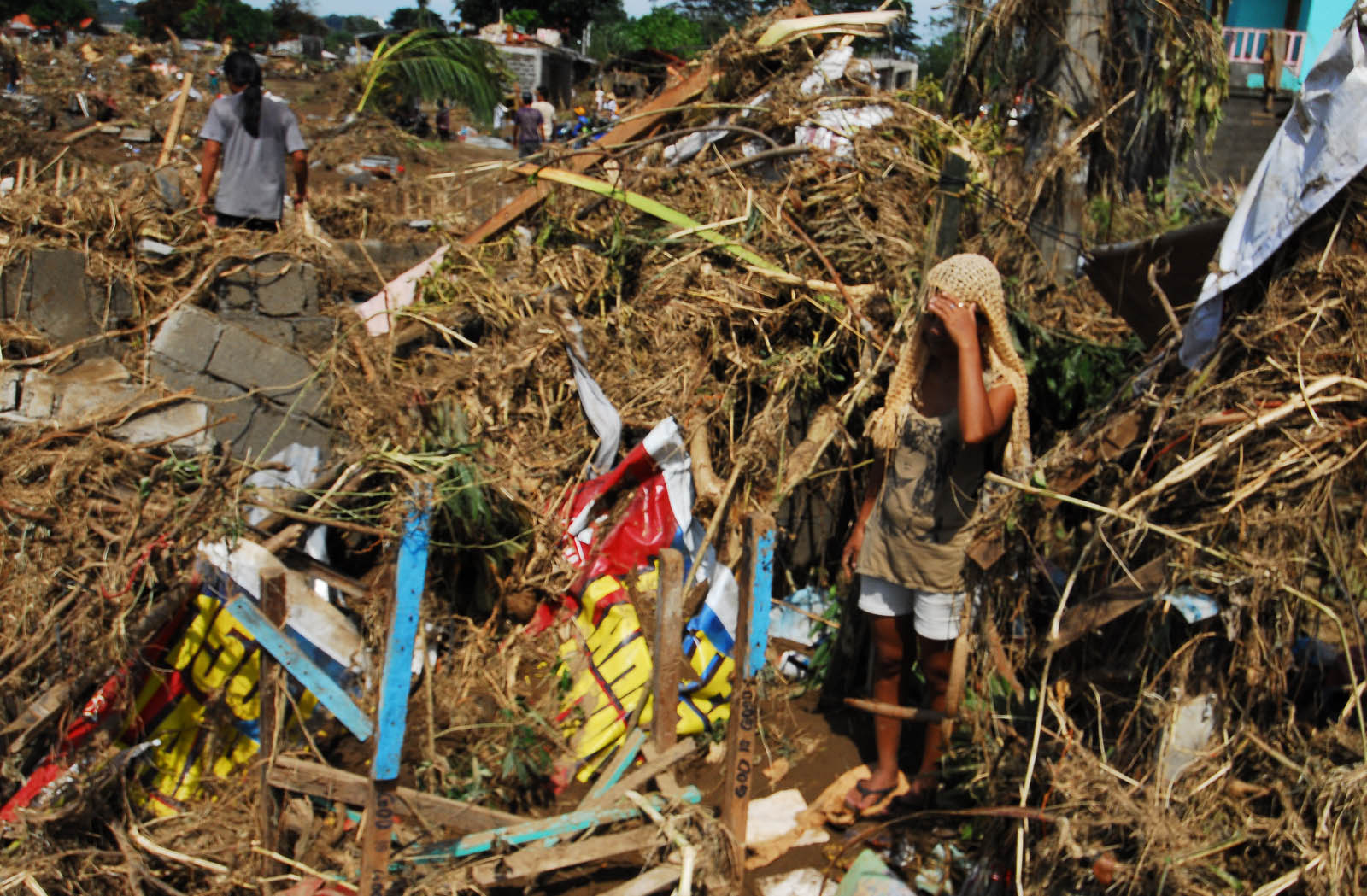CAGAYAN DE ORO CITY (MindaNews/19 February) — The two-day Mindanao Summit on Disaster Risk Reduction and Geo-hazard Awareness ended Sunday afternoon with an eight-point Declaration urging, among others, the passage of a law establishing a “permanent, independent disaster management and risk reduction agency” and the conduct of similar summits in Mindanao’s six regions.
The three-page, 28-paragraph “Mindanao Declaration on Disaster Risk Reduction Priorities,” drafted from the regional workshop results and approved by consensus, listed eight priorities: Knowledge, Emergency Preparedness and Response, DRRM Plans, Enforcement of Laws, Ecosystem-based Approach, National Legislation, Institutional Mechanisms, and Implementation.
 This is the bridge in Barangay Hinaplanon in Iligan City that collapsed as the Mandulog River swelled dawn of Dec. 17, 2011 with rains from Typhoon Sendong. Photo taken Dec. 19 by PO1 Marc Claro / Iligan City Police Office
This is the bridge in Barangay Hinaplanon in Iligan City that collapsed as the Mandulog River swelled dawn of Dec. 17, 2011 with rains from Typhoon Sendong. Photo taken Dec. 19 by PO1 Marc Claro / Iligan City Police Office
Under Emergency Preparedness and Response, the Declaration seeks to address the needs of vulnerable and exposed communities, including “building adequate and permanent evacuation centers so that public schools, buildings, and grounds are not regularly disrupted as a result of disaster.”
It also proposes the relocation of communities in danger zones to “safe and accessible places” and the provision of emergency kits for individuals and families, conducting regular drills to prepare for disasters; simplifying disaster response protocols; and organizing effective psychosocial interventions to help affected persons and families to cope and adapt.
Under National Legislation, the Declaration recommends the passage of pending bills such as the People’s Survival Fund, People’s Solidarity Fund, the Land Use Act, and “laws that will establish a permanent, independent disaster management and risk reduction agency and promote inter-local government cooperation in DRR –CCA (Disaster Risk Reduction-Climate Change Adaptation).
Independent agency
Advocates of the Disaster Risk Reduction and Management Act of 2010 recall that the creation of an independent agency dealing with disaster risk reduction and management was proposed in the bill on the DRRM but this was not carried in the final version.
Under the Philippine Disaster Risk Reduction and Management Act of 2010, the agency tasked with dealing with disasters is the inter-agency National Disaster Risk Reduction and Management Council (NDRRMC). The Council is chaired by the Department of Defense and its executive director is from the Office of the Civil Defense.
Twenty-four years ago, the Catholic Bishops Conference of the Philippines (CBCP) in its Pastoral Letter on Ecology issued on January 29, 1988, proposed that government “groups together into an independent Department all the agencies which deal at present with ecological issues.”
“This Department should promote an awareness of the fragility and limited carrying capacity of our islands’ ecosystems and advocate measures designed to support ecologically sustainable development.”
 Rescuers and volunteers help residents of Barangay Consolacion in Cagayan de Oro City after flood waters coming from the mountains brought about by tropical storm Sendong engulfed several of the city’s barangays on December 16 and 17, 2011. MindaNews photo by ERWIN MASCARIÑAS
Rescuers and volunteers help residents of Barangay Consolacion in Cagayan de Oro City after flood waters coming from the mountains brought about by tropical storm Sendong engulfed several of the city’s barangays on December 16 and 17, 2011. MindaNews photo by ERWIN MASCARIÑAS
“Obviously, the Department should have an important contribution to make to related Departments like Education, Health , Natural Resources and Agriculture,” the CBCP letter said.
The Mindanao Summit, the first island-wide gathering to discuss and learn lessons from the Sendong tragedy in December, was convened by Mindanawon senators Aquilino “Koko” Pimentel and Teofisto Guingona, both of whom stayed in the session hall at the Dynasty Hotel for the duration of the full-packed two-day meet.
Among the issues tackled were the Philippine Disaster Risk Reduction and Management Action Plan, the Philippine Climate Change Action Plan, Typhoon Sendong: A scientific explanation on what happened, the State of Disaster Preparedness in Mindanao, Geo-hazard zones in Mindanao, water use challenges, civil society participation.
Declaration Monitoring Secretariat
Pimentel said he and Guingona will set up a “Declaration Monitoring Secretariat” which will “write to you periodically” about what has been done about the eight-point Declaration in the Summit that gathered some 300 participants from government and civil society on the first day and about half that number on the second day.
The Declaration acknowledged that mitigation and adaptation measures by all sectors and levels of government have been “inadequately implemented and weakly coordinated resulting in inefficient use of resources and lack of accountability” but also noted that most communities are “resilient and respond to disasters on their own, through self-help measures and reliance on their own capacities, which however are inadequate in the face of major disasters.”
It also expressed concern that “logging, mining, unsustainable agriculture, and other similar land use activities increase the vulnerability of many ecosystems and communities in our island.”

An old man ponders about his future amidst the ruins in Barangay Hinaplanon 20 December 2011 days after Typhoon Sendong wrought havoc in Iligan City. Hinaplanon was among the most badly hit barangays when the nearby Mandulog River swelled. MindaNews photo by BOBBY TIMONERA
Knowledge topped the list of eight priorities and the Declaration acknowledges the need to address through scientific research, training and information, education, and communication interventions, using up-to-date technology and community-based approaches, the “lack of knowledge and/or inadequate communication of existing knowledge” on disaster hazards, vulnerability, exposure and risks and adaptation and response measures necessary, including flood and other hazard maps. It also seeks the integration of DRR and geo-hazard awareness in the educational curriculum as well as in religious institutions and the production of child-friendly IEC materials.
“Information should also be based on local best practices, be indigenized and translated into the vernacular,” it added.
Under Enforcement of Laws, the Declaration wants, among others, strict implementation and enforcement by the national government and local governments of environmental, natural resources, land-use laws, including prohibiting mining and logging in disaster-prone/vulnerable areas.
Ridge to reef
Under DRRM Plans, the Declaration seeks the adoption and implementation of DRRM plans at the regional, provincial, city, municipal and barangay levels based on “good and updated, location-specific, scientific knowledge and analysis, including risk assessment and consciousness of adaptive capacity, and aiming at zero-casualty and minimal economic damage.”
Under Ecosystem-based approach, the Declaration notes that where appropriate, a river basin management shall be implemented in managing areas from ridge to reef, including in implementing DRR plans and programs. It also encourages “massive reforestation, including of mangrove forests, through planting of native species to promote biodiversity and sustainability.”
 Many residents returned to their homes wiped out like this in Sitio Basak, Barangay Macasandig on Sunday , Dec. 18, 2011, one of the village in Cagayan de Oro City that was wipeout by last Saturday’s dawn flood. MindaNews photo by Froilan Gallardo
Many residents returned to their homes wiped out like this in Sitio Basak, Barangay Macasandig on Sunday , Dec. 18, 2011, one of the village in Cagayan de Oro City that was wipeout by last Saturday’s dawn flood. MindaNews photo by Froilan Gallardo
Under Institutional Mechanisms, the Declaration wants incident command systems to be institutionalized at all levels, that there should be an LGU (local government unit) rating system for disaster response and accountability, that adequate early warning systems be made at all levels using “appropriate local indigenous and modern communication systems and technology, including 3-digit phone numbers with back-up systems.
It also said DRR summits should be conducted in Mindanao’s six regions, including the Autonomous Region in Muslim Mindanao, and that budgetary rules be modified to allow staffing of the DRRM offices in all local governments.
The eighth priority on designing and implementing innovative capacity-building, resource mobilization strategies and mechanisms, including monitoring progress, to implement these DRR priorities, was immediately responded to with the creation of a “Declaration Monitoring Secretariat” by the offices of the two Mindanawon senators.
Summit facilitator Dean Tony Lavina of the Ateneo School of Government said that in the many conferences he has attended on disaster risk reduction in the last 20 years, “this will be one of the best if not the best and most progressive Declaration ever.” (Carolyn O. Arguillas/MindaNews)
